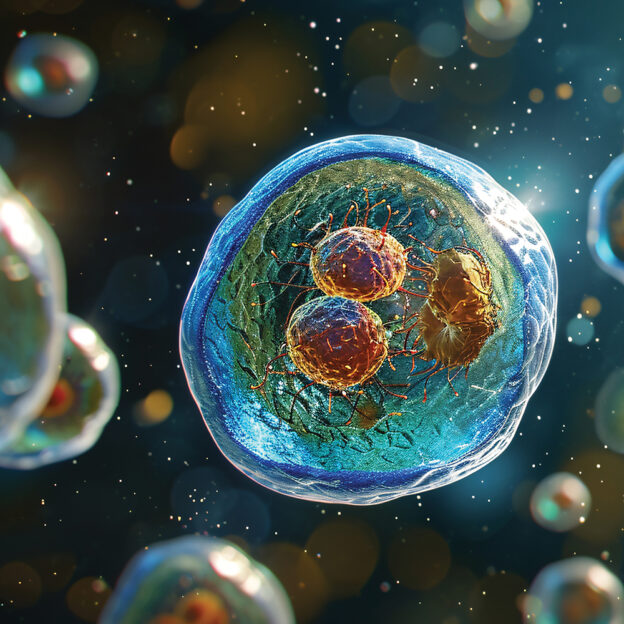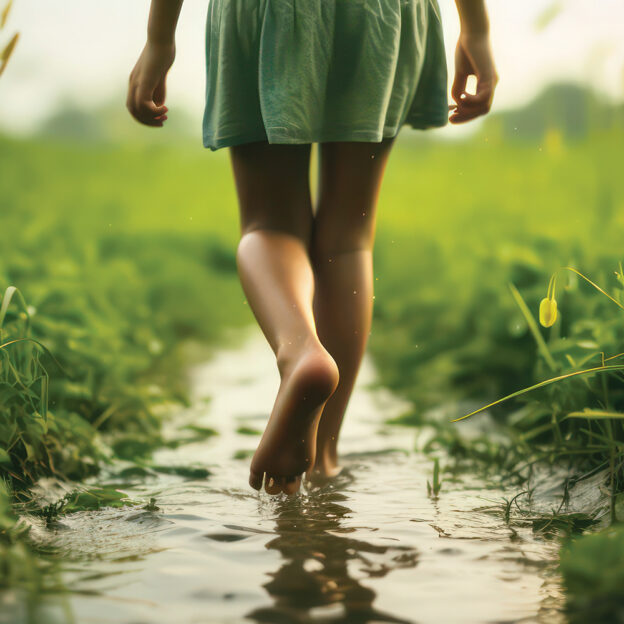Table of Contents
By Jade Wu, PhD

My patient Hugh is an older gentleman—retired and widowed but optimistic and surrounded by loving grandkids. As a behavior sleep specialist, I was able to help Hugh improve his sleep quite quickly, but he continued to feel very tired. After additional exploration of his day-to-day experiences, I realized Hugh was going through depression for the first time in his life, and he didn’t realize it.
When I suggested this idea to Hugh, he said, “But with all due respect, I’m not the mopey, pessimistic, woe-is-me type at all!”
As I explained, depression is not a personality type or a worldview. For some people, their outlook on life changes, and for others, it shows up more as a physical change—the body feels heavier, slower, and more tired.
Depression, Fatigue & Insomnia
In a 2019 Stanford-Sungkyunkwan study, people with severe fatigue and insomnia scored nearly twice as high on depression as those with mild fatigue and insomnia. Since everybody in the study had insomnia, we know it’s not so much the insomnia that mattered for how tired they were—it was depression.
The relationship is even more striking in the Fortier-Brochu and colleagues’ Canadian study. Besides age, depression was the only factor that predicted fatigue levels, out of a dozen factors ranging from medical conditions to anxiety to occupation. You may think, “But I really don’t have depression.” Well, the people in that study technically didn’t either. The researchers specifically excluded people with clinically diagnosable levels of depression.
Tired Versus Sleepy
Feeling tired means feeling worn out, depleted, exhausted, bored, low energy, “done with the day.” It’s your body and mind asking for rest, rejuvenation, or sometimes, just a change of scenery. In moments like these, the cure may be a nice stretch, a comforting cup of tea, or a walk in the park.
Feeling sleepy suggests you’re close to falling asleep. That’s it. If your eyes are drooping and your head is involuntarily nodding, or you’ve been missing plot points in the movie you’re watching, you are sleepy. In this case, the cure is to sleep.
Boost Mood with Light and Movement
There are two very effective ways to boost mood and sleep quality—light and movement. That’s right. Physical activity and daytime light exposure appear to be among the best therapies for depression. My patient Hugh took up a combination light- and- movement regimen. He started taking an early morning walk outside. He fixed his bicycle and enjoyed weekend rides. He offered to babysit the grandkids. He even started volunteering at the local dog shelter for some extra get-out-of-the-house time. To Hugh’s delight, he felt more energetic than he had in years, and his sleep improved even more.
That’s not surprising. A study of more than four hundred thousand people in the United Kingdom found that the more time people spent outside, the better they slept, the less fatigue, and the better their mood.1
Getting a big dose of direct sunlight exposure early in the day is especially beneficial for sleep! This leads to more deep sleep later that night.2
Amount of Evening Light Exposure Matters Less Than Amount of Daytime Light Exposure
Our brains don’t just consider how much evening light there is when regulating melatonin release. They also consider our recent photic history—as in how much light exposure we got during the day. In fact, this is so powerful that getting bright daytime light lowers the problematic effects of screen use in the evening!
For example, Swedish researchers had participants come to their lab in the afternoon, spend about six and a half hours in the brightly lit environment, then read a physical book or an ebook on a tablet for two hours before bedtime. All participants underwent overnight sleep monitoring. Interestingly, there were absolutely no sleep differences among participants who read a paper book versus an ebook.
In fact, they had the same sleep quantity and quality, melatonin profile, and next-day functioning.3 This may seem to contradict other studies, which find that two hours of bright evening screen use disturbs sleep, but the difference here is that all participants spent a big chunk of their daytime in bright light.
For reference, a typical living room is about 200 lux, a cloudy day 20,000 lux, and direct sun 100,000 lux. If you work in a somewhat dark environment during the day (eg, home office, windowless cubicle, warehouse, lab), install more broad-spectrum lights, sit closer to a window, or best yet, go for an outdoor walk during your lunch break. This can go a long way to make your evening screen use less of a problem for sleep.
Additionally, if abstaining from screens in the evening is not feasible, you can tone down their impact. Short wavelength lights (eg, blue) are what suppress melatonin, unlike long wavelength lights (eg, orange). There is not yet perfect consensus among researchers on whether Night Shift mode on smartphones works, but the evidence is leaning toward it being at least somewhat helpful.
People are especially likely to benefit from blue light–blocking glasses if they have insomnia, ADHD, bipolar disorder, delayed sleep phase disorder (ie, extreme night owls), or combinations of them.4 For example, one study found that wearing blue light–blocking glasses for two hours in the evening helped people with insomnia feel significantly better about their sleep, and even increased actual sleep duration by about the same amount that the most popular insomnia medications do (about twenty-eight minutes per night).5
Another study combined blue light–blocking glasses with cognitive behavioral therapy for insomnia (CBT-I) and found that the glasses enhanced overall treatment.6 Although there are still very few studies on this topic, the findings seem promising.
One recent study pooling data from more than one million people from the Netherlands, United Kingdom, and the United States offers an excellent bird’s-eye view of sleep characteristics across the lifespan. Researchers found that, on average, adults over the age of sixty-five get the same amount of sleep as middle-aged adults and even people in the thirties—approximately seven hours per day.
Their average sleep efficiency (amount of time in bed while asleep) was 88 percent—a percentage point or two lower than younger adults, but still solidly in the healthy range of eighty-five to ninety-five percent. These trends illustrate that sleep doesn’t have to worsen as we enter retirement age, and that ultimately, older people are getting a good amount of quality sleep.7
I recommend getting a pair of blue-light blocking glasses with orange- or amber-colored lenses to best block out short wavelength lights. You can wear them for a couple of hours before bedtime but not during the day (unless indicated by your eye doctor), because this may backfire and worsen circadian rhythm.
Remember that the contrast between light exposure during the day versus night is key to proper melatonin release, and by extension, better sleep quality and mood.
—
Jade Wu, PhD, DBSM, is a board-certified behavioral sleep medicine specialist and researcher at Duke University School of Medicine. She is a contributor to a number of outlets, including NPR, Huffington Post, and ABC News, and host of the popular Savvy Psychologist podcast. She is the former Co-Chair of Outreach and Public Education at the Society of Behavioral Sleep Medicine. She lives in Durham, North Carolina, with her family and (too many) animals.
Well Being Journal adapted the excerpt above from Hello Sleep by Jade Wu, PhD. Reprinted with permission of St Martin’s Essentials, an imprint of St Martin’s Publishing Group copyright 2023 by Jade Wu.
References
- Burns, Angus C, et al. “Time Spent in Outdoor Light Is Associated with Mood, Sleep, and Circadian Rhythm-Related Outcomes: A Cross-Sectional and Longitudinal Study in over 400,000 UK Biobank Participants.” Journal of Affective Disorders 2021;295: 347–52.
- Wams, Emma J, et al. “Linking Light exposure and subsequent Sleep: A Field Polysomnography Study in Humans.” Sleep 2017;40(12).
- Frida H Rangtell, et al. “Two Hours of Evening Reading on a Self-Luminous Tablet vs. Reading a Physical Book Does Not Alter Sleep after Daytime Bright Light Exposure,” Sleep Medicine 2016;23: 111–18.
- Ari Shechter, et al. “Interventions to Reduce Short-Wavelength (‘Blue’) Light Exposure at Night and Their Effects on Sleep: A Systematic Review and Meta-Analysis,” Sleep Advances 2020;1(1): 1–13.
- Ari Shechter, et al. “Blocking Nocturnal Blue Light for Insomnia: A Randomized Controlled Trial,” Journal of Psychiatric Research 2018;96: 196–202. https://doi.org/10.1016/J.JPSYCHIRES.2017.10.015.
- Karolina Jank?, et al. “Block the Light and Sleep Well: Evening Blue Light Filtration as a Part of Cognitive Behavioral Therapy for Insomnia,” Chronobiology International 2020;37(2): 248–59. https://doi.org/10.1080/07420528.2019.1692859.
- Desana Kocevska, et al. “Sleep Characteristics across the Lifespan in 1.1 Million People from the Netherlands, United Kingdom and United States: A Systematic Review and MetaAnalysis,” Nature Human Behaviour 2021;5(1): 113–22. https://doi.org/10.1038/S41562-020-00965-X.





